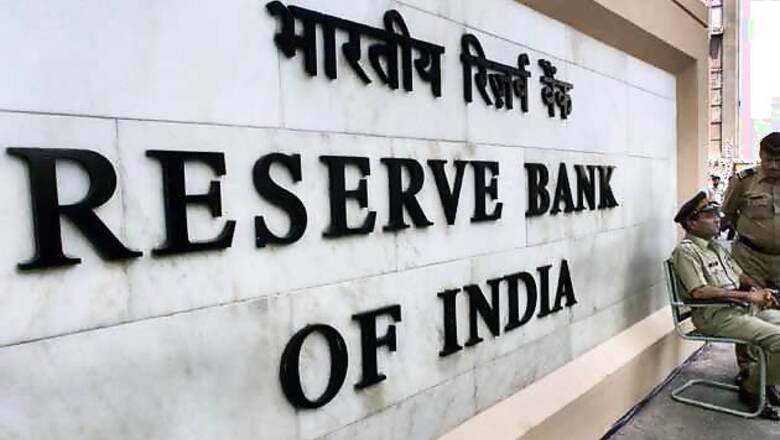
views
Mumbai: Hinting at status quo on policy rates, the RBI on Monday said its immediate focus is to stabilise rupee and made a case for calibrated action to contain the current account deficit, which is a major reason for the steep fall in currency.
"The priority for monetary policy now is to restore stability in the currency market so that macro-financial conditions remain supportive of growth. (However) this strategy will succeed only if reinforced by structural reforms to reduce the CAD and step up savings and investment," RBI said in its macroeconomic and monetary developments review released on the eve of the policy announcement.
"Amplifying macro-financial risks warrant cautious monetary policy stance," it added. A survey of external professional forecasters done by Reserve Bank increased its median expectation on rupee value to the 59.5 level to the dollar by March 2014 - nearly the same level at which the domestic currency is now trading. This is compared to the earlier expectation of 54.
A majority of RBI watchers expect the policy to be a "no show" event, but are looking forward to the guidance which Governor D Subbarao gives in the quarterly policy announcement, which would be the last before he demits office early September.
The depreciation in the rupee, which has shed over 10 per cent this fiscal, will weigh heavy on RBI, they said, adding that this is a shift from the central bank's focus on bringing down inflation and propping up economic growth.
"While monetary policy is largely guided by the growth-inflation dynamics, it is also tempered by considerations of risks of external imbalances," the report said.
Depreciation in the rupee to a record low of 61.21 against a dollar has forced the RBI to take some unconventional measures to curtail liquidity and curb speculation in the past fortnight. The steps taken include limiting banks to draw only 50 per cent of their total deposits in overnight borrowings and maintaining 99 per cent average CRR everyday, apart from increasing of 2 per cent interest rate on the marginal standing facility.
It said the measures give anything but "some breathing time" and would succeed only if reinforced by structural reforms to reduce the CAD. Flagging consumer price inflation, which has been constantly hovering in the double digits for the past 15 months even though wholesale price index has eased, RBI said the high retail inflation number puts pressure on public finances and erodes domestic savings, which in turn widen CAD.
The CAD will improve only on structural reforms, it said, adding that CAD is expected to come lower in FY14 than the 4.8 per cent last fiscal. However, the 3.8 per cent achieved in the last quarter of FY13 is likely to be breached in the June quarter, it said.
However, RBI said that even though the number may come in lower, the slowdown in the investor interest, which has resulted in outflows of USD 12 billion since last week of May alone, will mean financing the CAD will be a difficult task. On the growth front, RBI raised concern saying that the recovery is likely to be slower.
"The pace of recovery is likely to be slow in view of the structural constraints," RBI said, adding that the recovery will come in the latter part of the fiscal on the back of a good monsoon. The professional forecasters have also downwardly revised their FY14 GDP growth expectations to 5.7 per cent at par with RBI s estimate given in the annual policy from the earlier 6 per cent, the survey finding said.
Noting that the tax mop up has been tepid so far, the report expressed concern over likely broadening of fiscal deficit and underlined the need for passing on the fuel and energy price increases to end consumers. "Fiscal deficit could widen if the exchange rate pass through is constrained by holding back administered price revisions (of fuel)," the report said.
Additionally, it recommended a shift in expenditure from current to capital expenditure which can result in "crowding-in" private investment.



















Comments
0 comment